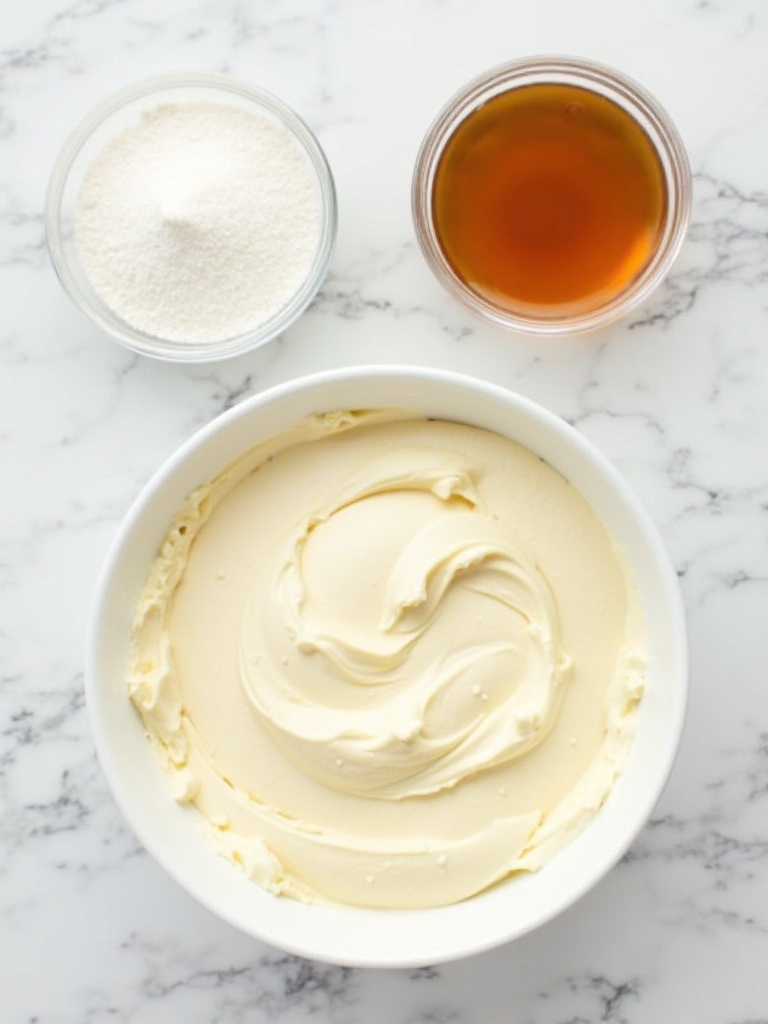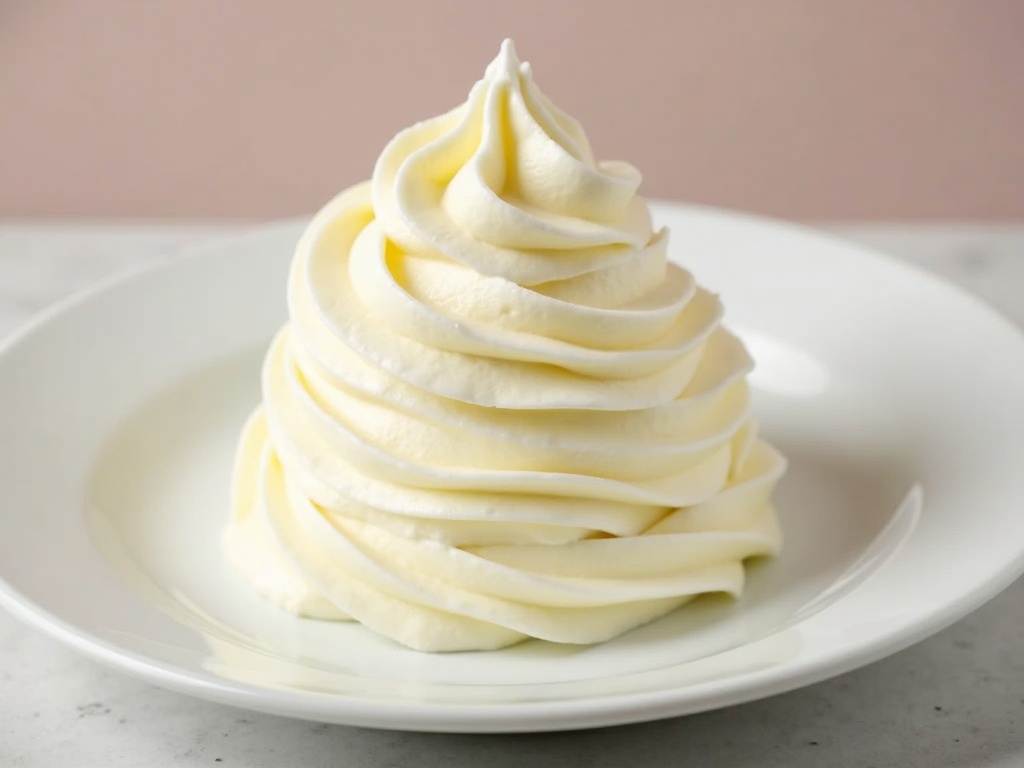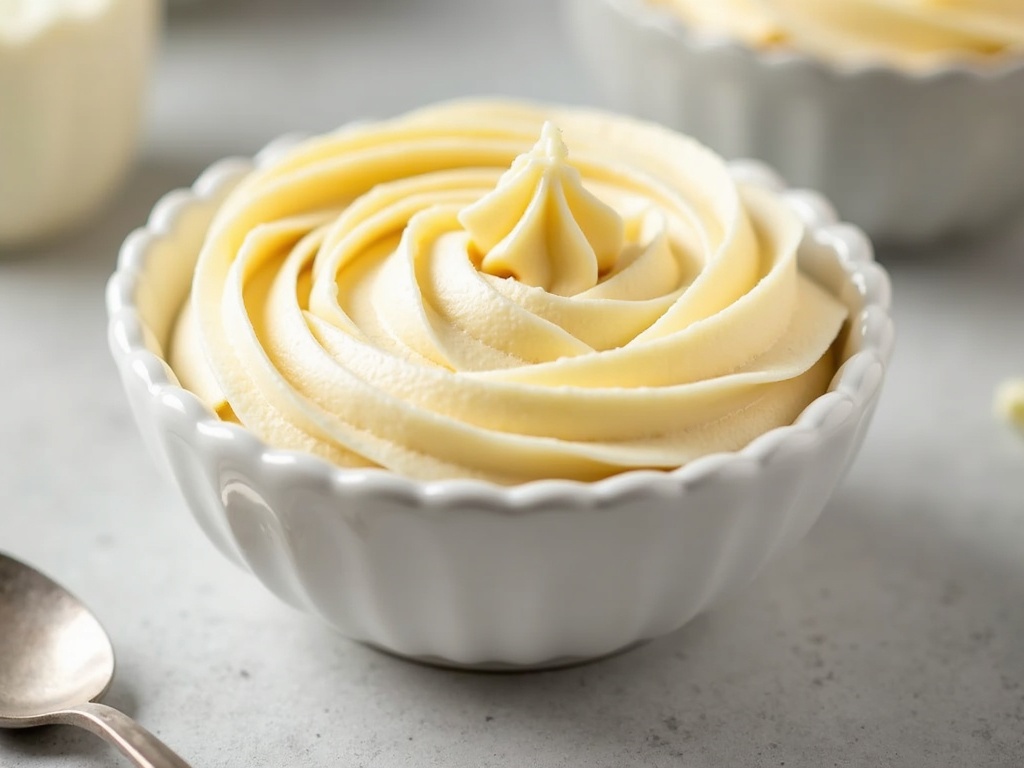Introduction
Creating the perfect buttercream icing recipe at home is one of those kitchen skills that can transform your baking from ordinary to extraordinary. This silky, sweet, and versatile frosting is the key to elevating cakes, cupcakes, and cookies to professional-looking desserts that taste as good as they look.
Table of Contents
Ingredients You Will Need

To create this dreamy buttercream icing recipe, you’ll need these simple yet essential ingredients:
- 1 cup (2 sticks/226g) unsalted butter, softened to room temperature
- 4 cups (480g) powdered sugar, sifted
- 2-3 tablespoons heavy cream or milk
- 2 teaspoons pure vanilla extract
- 1/4 teaspoon salt (to balance sweetness)
- Optional: Food coloring of your choice
The quality of your ingredients makes a significant difference in the final product. I recommend using European-style butter with higher fat content for an extra creamy texture. For a richer flavor profile, consider using Madagascar bourbon vanilla or clear vanilla for a pristine white frosting. If you’re lactose intolerant, plant-based butter and coconut cream make excellent substitutions while maintaining that luxurious mouthfeel.
Timing
Creating the perfect buttercream icing isn’t just about the ingredients—it’s also about timing. Here’s what you can expect:
- Preparation time: 10 minutes (including bringing butter to room temperature)
- Active mixing time: 7-10 minutes
- Total time: 20 minutes
This is significantly faster than Swiss meringue buttercream, which can take up to 40 minutes to prepare. The beauty of this American-style buttercream icing recipe is that it delivers professional results in less than half the time of other frosting styles, making it perfect for busy bakers.
Step-by-Step Instructions

Step 1: Prepare the Butter
Start with properly softened butter—this is absolutely critical for achieving that perfectly smooth texture. The butter should be at cool room temperature, meaning you can easily press your finger into it but it’s not melting or greasy. If you’re in a hurry, cut the butter into small cubes and let it sit for 30 minutes rather than microwaving, which can cause uneven softening.
Step 2: Beat the Butter
In a large bowl using a stand mixer fitted with the paddle attachment (or a hand mixer), beat the butter on medium-high speed for 3-5 minutes until it becomes noticeably lighter in both color and texture. This step incorporates air into the butter, creating that fluffy base that’s essential for perfect buttercream icing. Don’t rush this step—proper aeration now means silkier frosting later.
Step 3: Add Powdered Sugar
Add the sifted powdered sugar one cup at a time, mixing on low speed initially to avoid a sugar cloud, then increasing to medium speed. Sifting is non-negotiable if you want truly smooth frosting—it eliminates those pesky sugar lumps that can ruin the texture of your buttercream icing recipe. After each addition, beat for about 30 seconds before adding more.
Step 4: Incorporate Liquid and Flavoring
Add the vanilla extract and 2 tablespoons of heavy cream or milk. Beat on medium-high speed for another 3 minutes. This extended mixing period creates that light, fluffy texture that makes buttercream frosting so irresistible. If the consistency seems too thick, add the remaining tablespoon of cream, but be careful not to over-thin the frosting, especially if you plan to pipe it.
Step 5: Add Salt and Adjust Consistency
Mix in the salt, which balances the sweetness perfectly. Now, evaluate your frosting’s consistency: for spreading, you want it slightly softer; for piping decorations, a slightly stiffer consistency works better. You can adjust by adding more powdered sugar (1 tablespoon at a time) to stiffen or more cream (1 teaspoon at a time) to soften.
Step 6: Color (Optional)
If using food coloring, add it now and mix until evenly distributed. Gel food colors are preferable as they don’t add additional liquid to your buttercream icing recipe. For intense colors, remember that frosting will darken slightly as it sits, so aim for a shade lighter than your desired result.

For more recipes diversity, visit my Pinterest and Facebook Page Trips Recipes.
Nutritional Information
Understanding what’s in your buttercream icing recipe helps you make informed choices. Here’s the breakdown per 2-tablespoon serving:
- Calories: 200
- Total Fat: 11g
- Saturated Fat: 7g
- Trans Fat: 0g
- Cholesterol: 30mg
- Sodium: 40mg
- Carbohydrates: 24g
- Fiber: 0g
- Sugars: 24g
- Protein: 0g
Healthier Alternatives for the Recipe
Even indulgent treats like buttercream icing can be modified to better fit various dietary needs:
- Reduce sugar by up to 25% for a less sweet version that still maintains structure
- Substitute half the butter with Greek yogurt cream cheese for fewer calories and added protein
- Use coconut cream and plant-based butter for a dairy-free alternative
- Incorporate natural food dyes from fruits and vegetables (beet powder, spirulina, turmeric) instead of artificial colors
- Add a tablespoon of unsweetened cocoa powder for a chocolate version with antioxidant benefits
- Try almond or coconut extract instead of vanilla for sugar-free flavor variations
Serving Suggestions
This versatile buttercream icing recipe pairs beautifully with numerous desserts:
- Layer between chocolate cake tiers for the perfect birthday celebration
- Pipe onto cupcakes using a star tip for professional-looking swirls
- Spread on sugar cookies as a decadent alternative to royal icing
- Fill macarons for a luxurious treat
- Use as filling between graham crackers for homemade cookie sandwiches
- Dollop onto brownie squares for an extra indulgent dessert
- Create a dessert charcuterie board with this frosting as a dip for fresh fruits and cookies
Common Mistakes to Avoid
Even experienced bakers can run into issues with buttercream icing. Here’s how to prevent common problems:
- Using butter that’s too cold, resulting in lumpy frosting (butter should be 65-70°F for optimal consistency)
- Over-mixing, which can trap air bubbles and cause a less smooth finish
- Adding liquid too quickly, causing the emulsion to break
- Using powdered sugar without sifting, leading to grainy texture
- Coloring with liquid food coloring instead of gel, which can thin out your frosting
- Not accounting for weather conditions—humidity can require more sugar, while dry conditions may need more liquid
- Rushing the process—each mixing stage needs adequate time to develop proper texture
Storing Tips for the Recipe
Proper storage ensures your buttercream icing recipe maintains its perfect texture and flavor:
- Room temperature: Covered buttercream will stay fresh for up to 3 days in a cool, dry place
- Refrigerated: Store in an airtight container for up to 1 week; bring to room temperature and re-whip before using
- Frozen: Seal tightly and freeze for up to 3 months; thaw overnight in the refrigerator, then bring to room temperature and re-whip
- Pipe leftover frosting into small mounds on a parchment-lined baking sheet, freeze, then transfer to freezer bags for pre-portioned future use
- Store different colors in separate containers to prevent bleeding
- When re-whipping refrigerated buttercream, add a splash of cream if necessary to restore the original texture
Conclusion
This perfect buttercream icing recipe is truly a baker’s secret weapon. With its ideal balance of sweetness, silky texture, and versatility, it’s no wonder this classic frosting remains a favorite for professionals and home bakers alike. The beauty of this recipe lies in its simplicity and adaptability—once you master the basic technique, you can customize it endlessly with different flavors, colors, and applications. Remember, the key to success is quality ingredients, proper butter temperature, and patience during the mixing process. I’d love to hear how your buttercream icing turns out and any creative ways you’ve adapted this recipe to make it your own!
FAQs
How do I fix grainy buttercream frosting?
If your buttercream icing recipe turns out grainy, it’s usually because the powdered sugar wasn’t sifted or properly incorporated. Fix it by continuing to beat the frosting on medium-high speed for 3-5 more minutes. For stubborn graininess, add 1-2 teaspoons of warm heavy cream and beat again.
Can buttercream icing be made in advance?
Absolutely! This buttercream icing can be made up to 3 days in advance and stored at room temperature in a cool kitchen, or up to a week in the refrigerator. Just remember to re-whip it before using to restore its fluffy texture.
Why did my buttercream separate or curdle?
Separation usually occurs when ingredients are at different temperatures or when liquid is added too quickly. To fix curdled buttercream icing, try warming the bowl slightly by wrapping a hot towel around it, then beat on medium-high speed until smooth. Alternatively, add 1-2 tablespoons of additional softened butter and continue beating.
How do I get my buttercream perfectly white instead of off-white?
For the whitest buttercream icing, use clear vanilla extract instead of brown vanilla, add a tiny drop of violet food coloring to counteract the yellow from the butter, and beat the butter thoroughly until it lightens in color before adding any sugar.
How much buttercream do I need for different cake sizes?
For a standard 8-inch round two-layer cake, this buttercream icing recipe provides ample frosting for filling and covering. For cupcakes, you’ll get enough to generously frost 24 standard cupcakes with some left over. If you’re creating elaborate decorations, consider making 1.5 times the recipe.
Can I make chocolate buttercream from this recipe?
Yes! To transform this into chocolate buttercream icing, simply add 1/2 cup of sifted unsweetened cocoa powder along with the powdered sugar and increase the heavy cream to 3-4 tablespoons for proper consistency.

Best Buttercream Icing Recipe
- Total Time: PT20M
- Yield: 3 cups
- Diet: Vegetarian
Description
Silky smooth American buttercream icing that’s perfect for cakes, cupcakes and cookies
Ingredients
- 1 cup (2 sticks/226g) unsalted butter, softened to room temperature
- 4 cups (480g) powdered sugar, sifted
- 2–3 tablespoons heavy cream or milk
- 2 teaspoons pure vanilla extract
- 1/4 teaspoon salt (to balance sweetness)
- Optional: Food coloring of your choice
Instructions
Step 1: Prepare the Butter
Use butter that’s soft but not melting—pressable yet firm. If short on time, cube it and let it sit for 30 minutes instead of microwaving.
Step 2: Beat the Butter
Beat the butter for 3–5 minutes until pale and fluffy. This aerates it, forming a light base crucial for smooth buttercream.
Step 3: Add Powdered Sugar
Sift and add sugar one cup at a time, mixing slowly at first, then medium speed. This prevents clumps and ensures a silky texture.
Step 4: Incorporate Liquid and Flavoring
Add vanilla and 2 tablespoons of cream or milk. Beat for 3 more minutes to achieve a fluffy, spreadable frosting. Add extra cream if needed.
Step 5: Add Salt and Adjust Consistency
Add salt to balance sweetness. Adjust consistency with small amounts of cream (to soften) or powdered sugar (to stiffen), depending on use.
Step 6: Color (Optional)
Mix in gel food coloring for vibrant shades without thinning the frosting. Aim slightly lighter, as colors deepen over time.
Notes
This versatile buttercream icing is easy to make and can be flavored or colored in countless ways
- Prep Time: PT10M
- Cook Time: PT0M
- Category: Dessert
- Method: Mixing
- Cuisine: American

